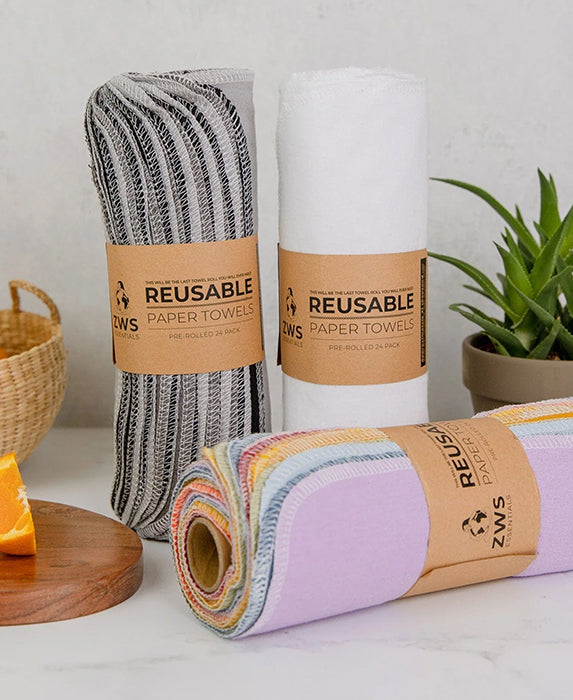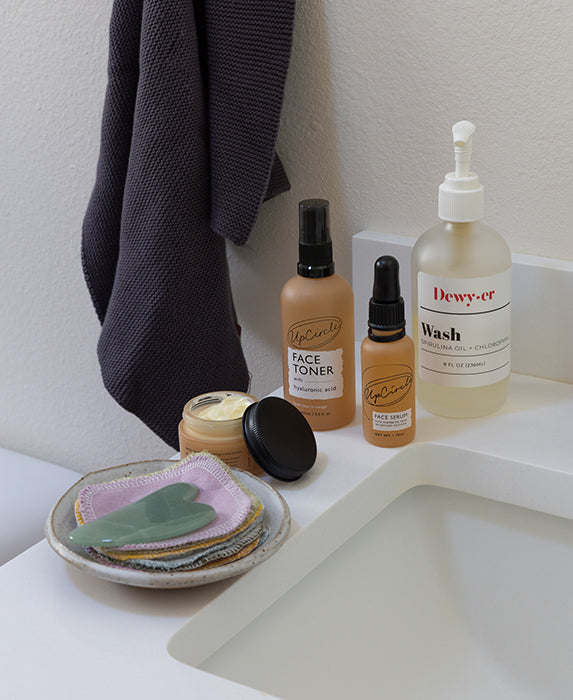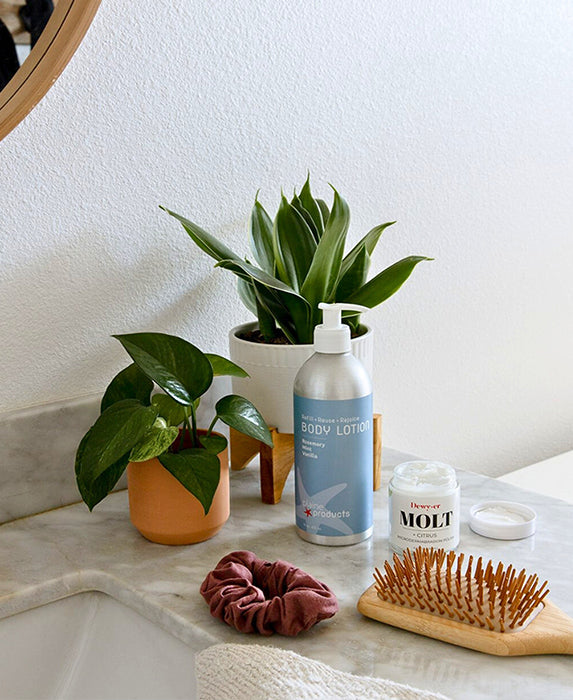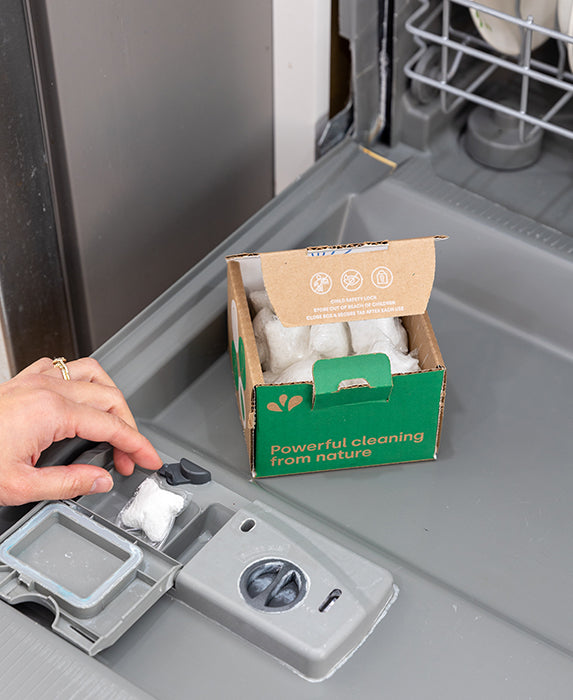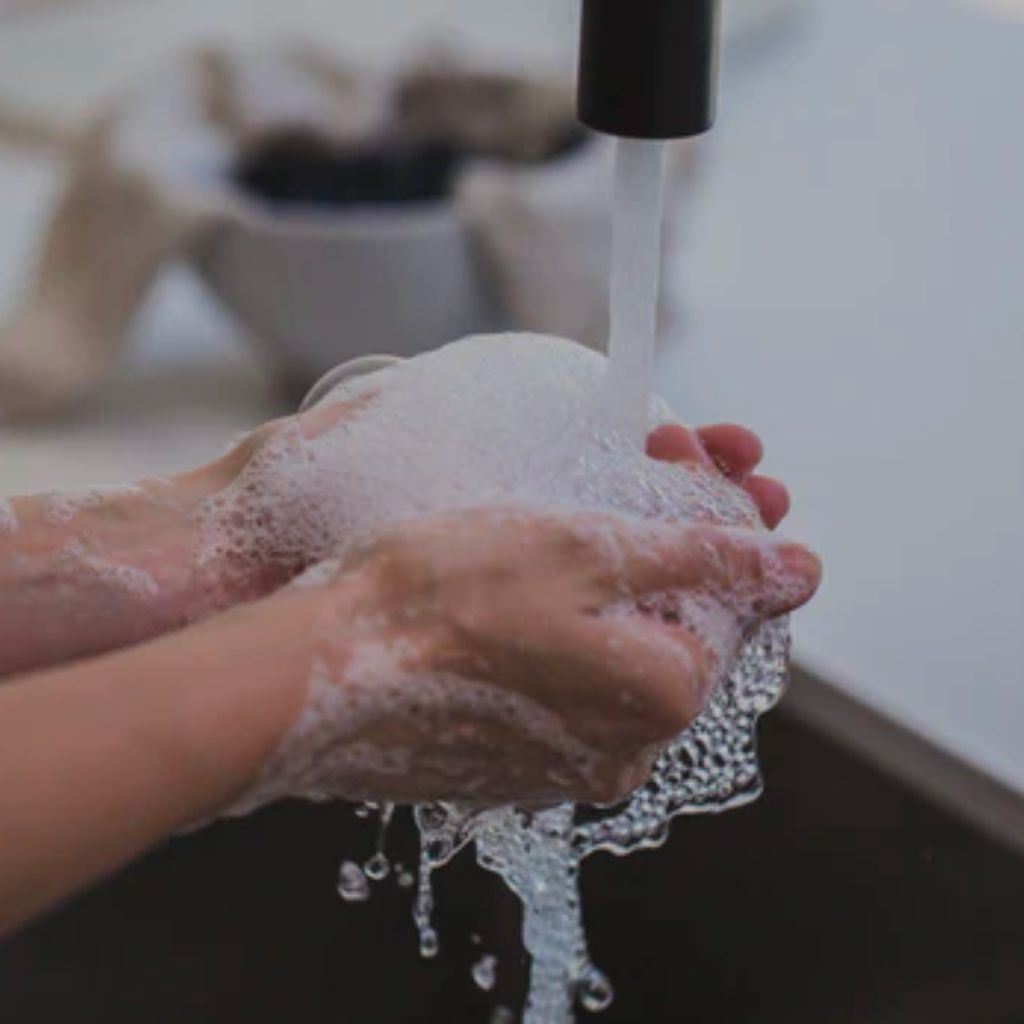You’ve probably heard of coral bleaching or reef-safe sunscreens on the news, with articles around the globe making headlines for banning chemical-based sunscreens, or closing coral reefs to rehabilitate them. But what really is reef-safe sunscreen, and why is it better for human health, and for the health of the planet? How is sunscreen linked to aquatic ecosystems, and why should you care? In this blog, we’ll dive into frequently asked questions around sunscreen and our changing planet.
What You’ll Learn:
- What “reef-safe” and “oxybenzone-free” means for your sun care
- Why switching to reef-safe sunscreen is important for both human + ecosystem health
- Learn answers to common sunscreen questions about ingredients, broad spectrum, the sun’s rays, SPF, and more!
Conventional Sunscreens
Fact: all sunscreens must contain some sort of active ingredient – aka any ingredient that produces a chemical or biological impact – to protect against the sun’s rays effectively. But… not all active ingredients are the same.
Conventional sunscreens, or chemical sunscreens, rely on chemical filters as their active ingredient, and contain a combo of oxybenzone, avobenzone, octisalate, octocrylene, homosalate or octinoxate to ‘protect’ your skin from the sun by absorbing UV rays through a chemical reaction.
But the truth is that these chemicals filters are actually able to absorb into our skin – and are beginning to be linked to major health concerns, most prominently hormone disruption. The most recent study by the FDA this May has raised major concerns about the lack of long-term testing for these ingredients that were originally approved in the 70s, and has begun to push for greater scientific research overall. But, even without these long-term studies, we already know a lot about these different chemical filters…
Let’s start with oxybenzone.
According to the EWG, oxybenzone is in nearly 65% of chemical sunscreens. Studies show it can cause allergic skin reactions, acts as a weak estrogen, and has strong anti-androgenic effects – an important hormone in the male reproductive system. Oxybenzone can also pass from expectant mothers to their children through their breast milk, and more research is being done to study the ongoing impacts of such exposure.
Beyond just the human health impacts, oxybenzone is one of the leading causes of coral bleaching, a problem which has wiped out a sizeable portion of our global coral reefs. They work by decreasing the natural ability of coral to defend themselves against bleaching, and damage their DNA and development. This damage pairs with other environmental stressors like ocean acidification, rising sea temperatures, and water pollution to limit the ability of coral to reproduce and survive as a whole.
We all play a role
Research shows that coral reefs in Hawaii are exposed to 6,000 TONS of sunscreen each year that runs off of our bodies, whether it be in the ocean, pool, or just down the shower drain. And a 2015 study shows that oxybenzone can be harmful at concentrations as low as 1 drop of water in 6.5 Olympic sized swimming pools. In Hawaii, some swimming beaches have been measured to have concentrations of over 10x that amount – which is severely damaging reefs and the wildlife that relies on the reefs to survive.
But oxybenzone isn’t the only problem.
Danish researchers conducted a study back in 2016 and found that 8 of 13 chemical filters allowed in US sunscreens can affect calcium signaling of male sperm cells, which can impact male fertility. Investigations by the National Institute of Health found a link between high concentrations of benzophenones and reduced fertility for males as well, and higher risk of endometriosis in women.
To put it simply: conventional sunscreens are not good. While we’re still working to strengthen FDA regulations on chemical sunscreens, and perform more long-term studies, all preliminary research shows the same thing – they’re negatively affecting our bodies, our families, and most importantly, our planet! The good news is that there is a better way with reef-safe sunscreens…
Reef-Safe Sunscreens
Reef-safe sunscreens, aka mineral-based sunscreens, are quickly becoming popular as a non-toxic alternative to chemical sunscreens that still protect you from the sun’s rays. They rely on active ingredients like titanium dioxide and zinc oxide, both of which provide ample UVA/UVB sun protection and are considered to be non-hazardous for both humans and coral reefs.
How Reef Safe Sunscreens work
Mineral-based sunscreens work by forming a physical barrier between your skin and the sun. You’ve probably seen zinc oxide slathered on the noses of lifeguards in movies, looking quite white and chalky as it forms that barrier. But zinc oxide has come a long way, and zinc oxide formulas have found ways to be tinted, clear, or easier to rub in – without compromising on quality.
Whether you choose zinc oxide or titanium dioxide for your active sunscreen ingredients, the most important facet of a truly ‘reef-safe’ sunscreen is that it is non-toxic & biodegradable. This means that all the ingredients in the sunscreen are able to naturally break down, without leaving chemical waste behind.

“Reef Safe” policies
Hawaii and Florida, two states greatly impacted by sunscreen pollution, have begun to take matters into their own hands by banning the sale of sunscreens that contain oxybenzone and octinoxate. Both states will have these laws go into 2021, which is a huge step in the right direction. Many other international tourist destinations are also beginning to require biodegradable sunscreen from anyone who wants to visit… and confiscating chemical sunscreens if you bring them anyways.
And it’s actually working! Previously bleached corals in the Pacific ocean are slowly beginning to bounce back after severe damage, with further studies emphasizing the historic resilience of coral reefs – giving us hope for places like the Great Barrier Reef. When the corals come back, so do different aquatic species that rely on corals to survive, supporting biodiversity as a whole.

Don’t live by the ocean?
Reef-safe sunscreens, whether you live next to the ocean or not, are important for everyone on the face of the Earth. Scientists, dermatologists, and experts all recommend you wear sunscreen every day, every single time you go outside, no matter how warm or cold it feels. This is because it protects your skin – helping defend against aging – as well as your long-term health – defending against skin cancer and other sun-related health problems.
And, when you shower at the end of each day, all that sunscreen will go down the drain, and as we learned from Finding Nemo… all drains lead to the ocean! By choosing a reef-safe sunscreen for your everyday face and body routine you can reduce the amount of chemicals you send down the drain, and reduce your footprint on our marine life.
Common Sunscreen Questions
What’s the difference between UVA and UVB rays? How do I protect myself from them?
In general, ultraviolet (UV) rays refer to electromagnetic light that can reach us from the sun, and are categorized by the length of the energy wavelength. This means UVA rays, aka ultraviolet A (long-wave) rays, are different from UVB rays, aka ultraviolet B (short-wave) rays.
While UVB rays are linked to sunburns, UVA rays are linked to aging skin… But both are linked to skin cancer due to their ability to damage cellular DNA and create genetic mutations. UVA rays account for 95% of the radiation reaching the Earth’s surface, but they are less intense than UVB rays. Despite being less intense, they penetrate the skin more deeply, which is why they’re linked to aging as well as skin cancer. It’s essential that you protect yourself from both, so look for the term “broad-spectrum.” This refers to sunscreens that can protect you from both!
What does a higher SPF mean?
SPF (sun protection factor) is a measure of how much UVB that a sunscreen can filter and protect against. Since there is currently no way to label the degree of protection from UVA, this is the typical way we look at the level of sun protection. It indicates how long it will take for the skin to redden as compared to how it would react without the sunscreen. For example, SPF 15 means that it will take 15x longer for someone who is wearing the sunscreen to have their skin redden than without.
Also, the higher the SPF the wider the range of UV rays coverage it offers, however this will start to plateau as you get higher–SPF 30 covers 97% of UV rays, and 50 SPF covers 98%, for example. We recommend always starting at 30SPF, and then going up from there depending on how long you plan on staying in the sun.
How do I properly use mineral-based sunscreens?
One of the most important steps for applying mineral sunscreens is making sure you apply a thorough layer that covers the entire area you’re looking to protect. Because it works by creating a physical barrier, start with a small amount and spread the product evenly on the skin before adding a second layer. One ounce of sunscreen for your entire lower half is generally recommended. Then, make sure you reapply every 80 minutes, or more quickly depending on if you’re swimming or sweating. A water-resistant sunscreen will always have the time span that it should last for under those conditions!
Do babies and kids need special sunscreens?
Babies and kids have naturally sensitive skin, and can sunburn extremely easily, so they absolutely need to be wearing sunscreen and other sun protection items when they go outside. They’re also more prone to allergic reactions and adverse reactions, so it’s important that they are wearing a mineral-based, non-toxic sunscreen. But – from the selection of EarthHero approved reef-safe sunscreen formulas – there is actually very little difference between sunscreens labeled for babies vs kids vs adults. Some children’s sunscreens will contain skin moisturizing additives like calendula to help nourish the skin while it protects, and of course they can feature different SPFs, but for the most part you should be safe applying any mineral-based sunscreen to your little one (of course avoiding ingestion, and the eyes, nose, and mouth!)
What are nanoparticles, and are they safe in sunscreen?
Nano particles are simply smaller versions of any particle. The tiny size of these particles make them easy to absorb by the skin and into the body. Whether or not they are harmful has more to do with what substance these particles are a part of as opposed to just their size.
Many chemical sunscreens rely on nano-particles to ensure a clear application. The risk of nano-sized particles used in mineral sunscreens–zinc oxide and titanium-dioxide–is still up for dispute, but to be safe we prefer to stick to non-nano when possible! To play it safe, look for non-nano zinc oxide, and non-nano titanium dioxide.

Want more information on the science behind natural sunscreens, and help finding one that’s perfect for your lifestyle? Check out our Natural Sunscreen Blog! Or – shop all our sunscreen + sun care products here!


